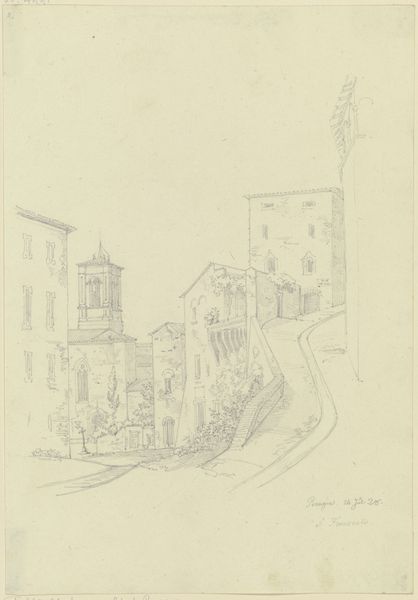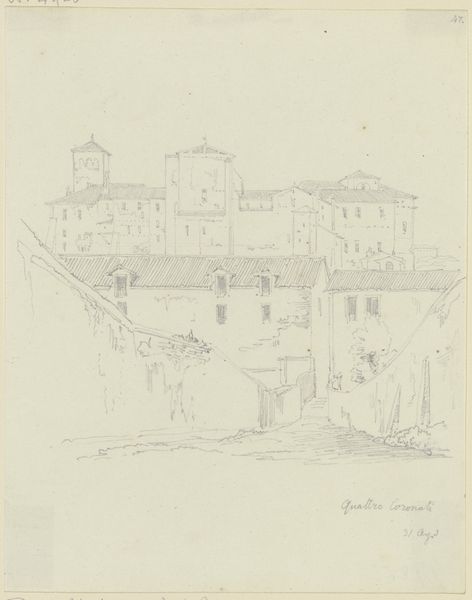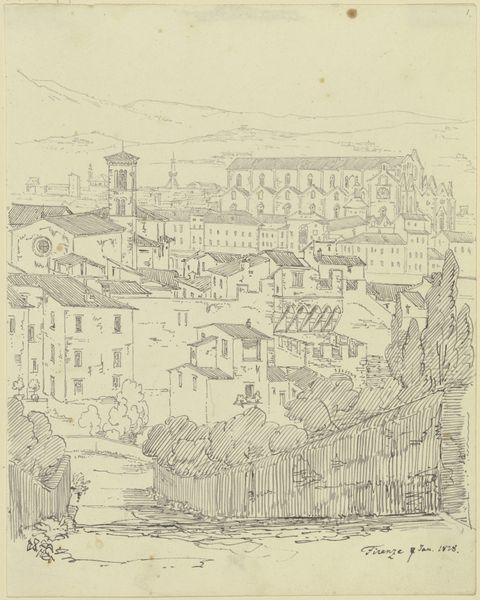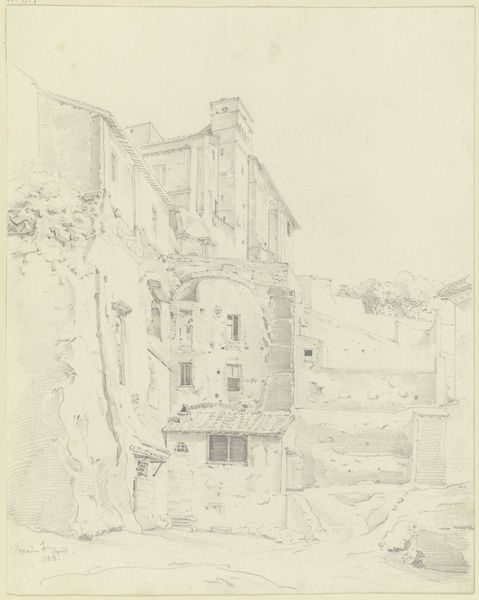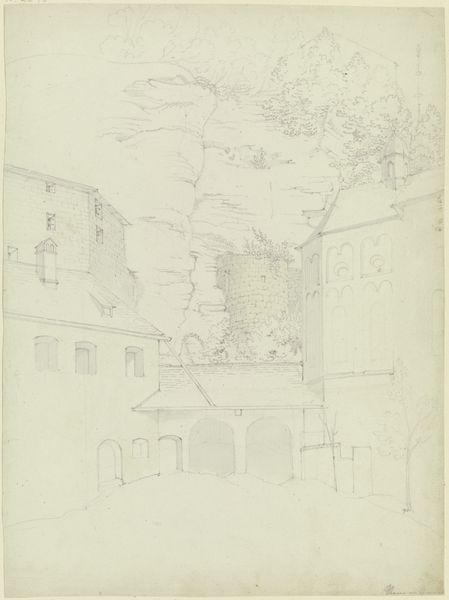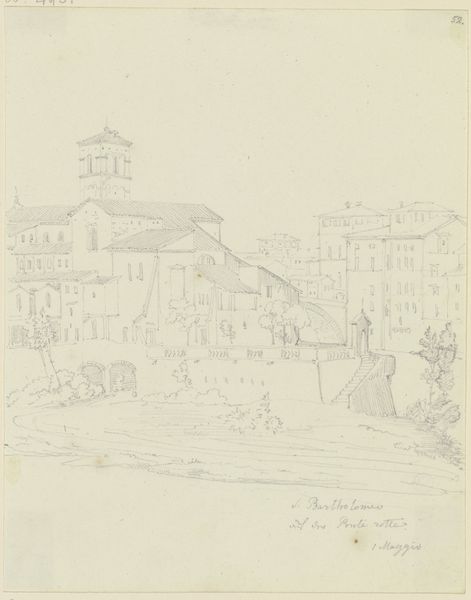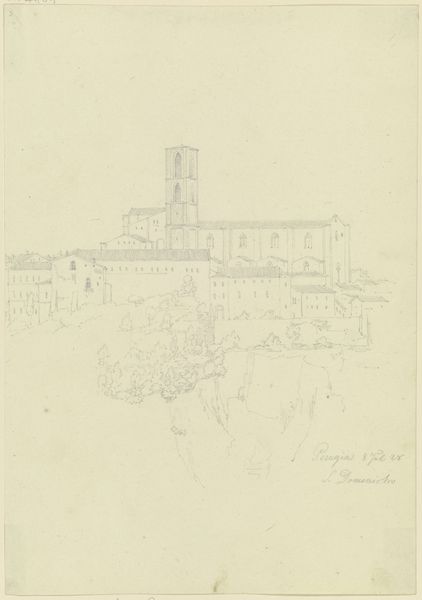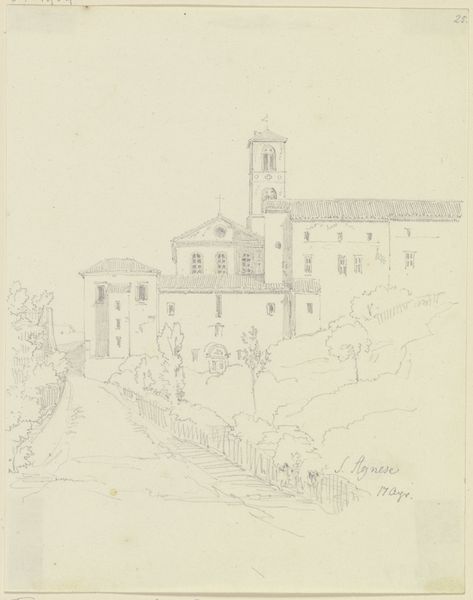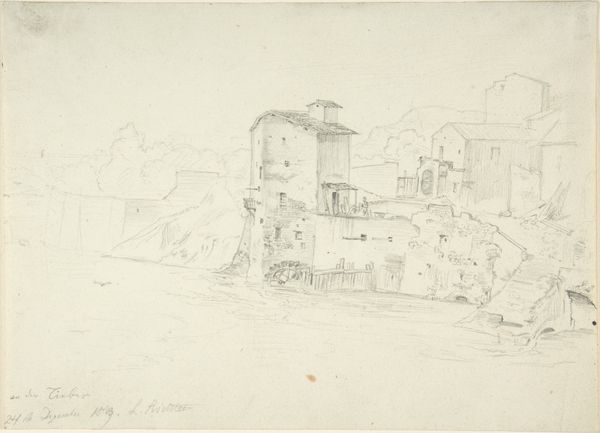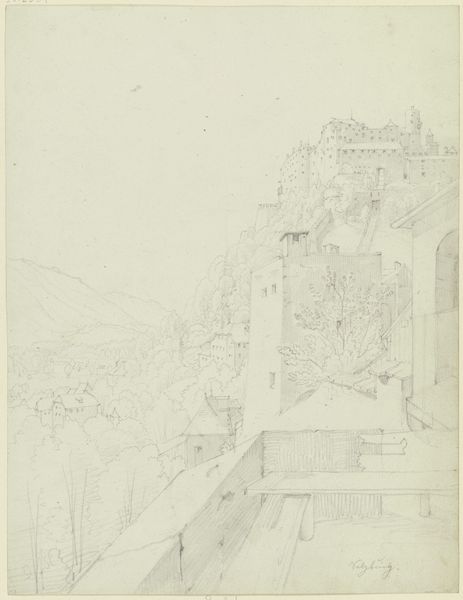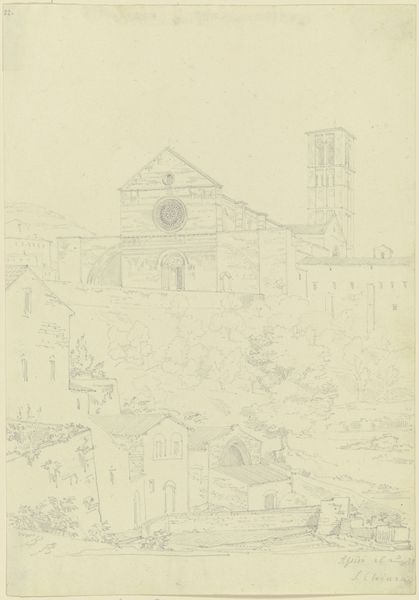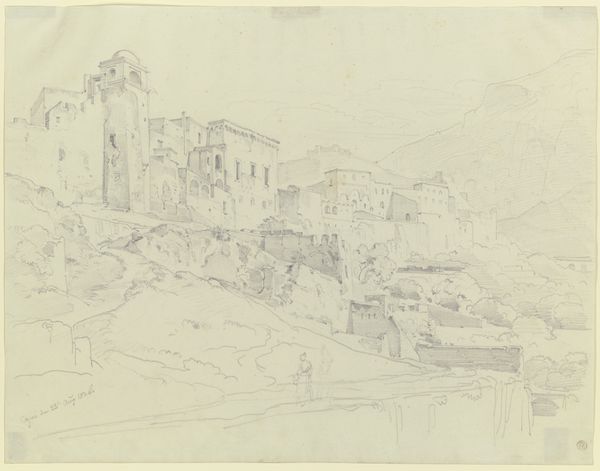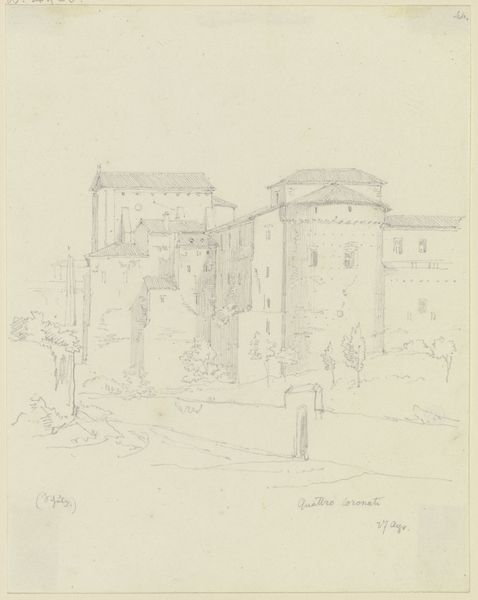
Copyright: Public Domain
Curator: Looking at this sketch by Friedrich Maximilian Hessemer, "St Severo in Perugia," created sometime around 1828, I'm struck by the way he captures the layered architecture. There's a definite romantic sensibility at play here. Editor: My first impression is a certain lightness; it’s almost ephemeral, yet meticulously constructed from the ground up using only a drawing implement. It’s predominantly architectural, save for some skillfully integrated landscaping around its base, really quite understated overall. Curator: Absolutely, and what's fascinating to me is how the medium of drawing itself—in all its fragility—speaks to the precariousness of the structures. This speaks volumes about the relationship between identity, memory, and place during the rise of the Romantic movement and burgeoning nationalist ideologies in 19th-century Europe. Editor: From my viewpoint, the act of observation, the translation of stone and mortar into lines on paper is key. What processes allowed Hessemer to build form through labor with simple materials? The contrast is that buildings become light drawings, an effect of delicate strokes rendering heavy masonry that deserves close examination. Curator: True. The sketch certainly prompts questions around cultural ownership and representation. I see this as being about class dynamics as well as power—this is romanticism, and who has the power in the time of its creation to memorialize the labor that went into creating these spaces. Editor: Definitely, it forces us to consider who benefited from its creation, those who occupy such buildings, and those who provide raw materials used in the industry of art, like Hessemer's sketching supplies. It's a picture which speaks to the economic underpinnings of art. Curator: It feels particularly resonant to consider all that in the current era, particularly considering questions of sustainability and urban development as these places exist for many others to see. Editor: For me, Hessemer’s sketch underscores that everything is connected and that these issues cannot be viewed through narrow scopes.
Comments
No comments
Be the first to comment and join the conversation on the ultimate creative platform.
